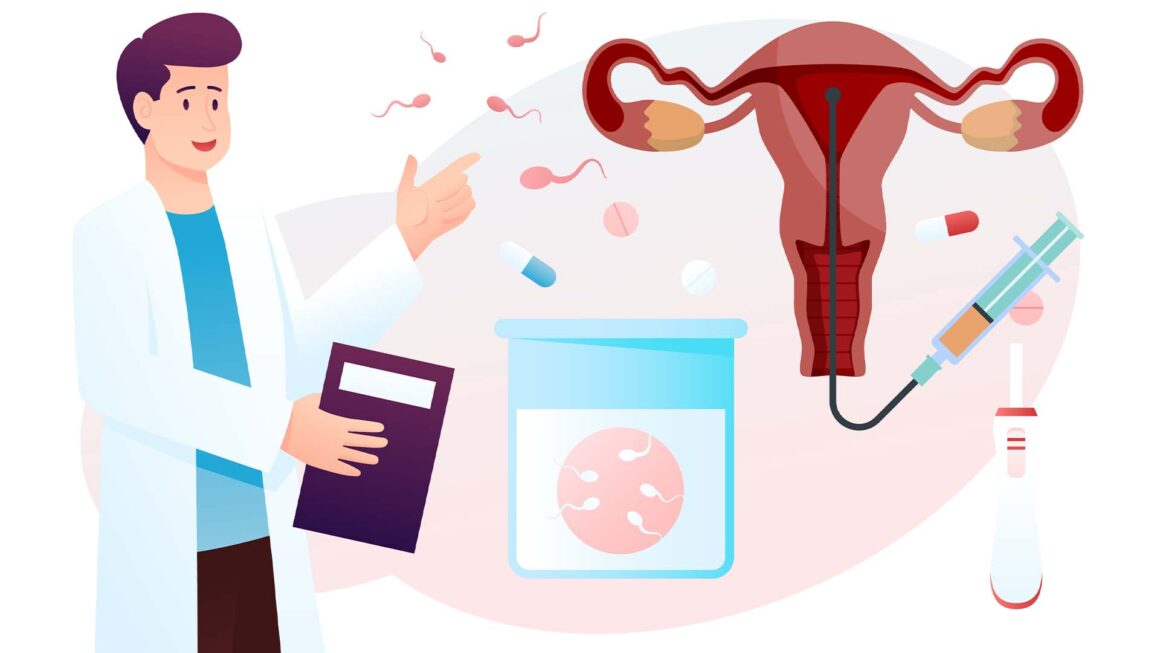Preparing for Intrauterine Insemination
The preparation begins with the ovulation of the woman either naturally or more efficient with the help of medications. Ovulation cycle is tracked by the doctor using LH kits or transvaginal ultrasound tests. Sometimes, medications like HCG could be injected to stimulate the release of more than one egg. The release of eggs is the trigger point. The sperm is collected from the male partner for further processing. The sperm then undergo a process known as “washing”. Here, the poor-quality sperm (bad morphology, bad motility etc.) and dead cells are removed, leaving behind a concentrated quantity of good-quality sperm. Around 24-36 hours after the ovulation is detected, the Intrauterine Insemination procedure is done.
The Intrauterine Insemination Procedure
On the day of the IUI, the female is laid down on the table. Then, a long and thin catheter is inserted into the vagina through the cervical opening. Once the catheter reaches its proper position into the uterus, the sperm is pushed through the catheter and into the uterus. The catheter (and speculum) is then removed from the vagina. Overall, the procedure takes only a few minutes to finish and is completely non-surgical. The procedure is generally painless and straightforward, though sometimes a patient might experience pain during the insertion. In such cases, specialized catheters are used which makes the insemination process easier.
Success rate of Intrauterine Insemination
The success rate of Intrauterine Insemination depends on many factors, most of which depend upon the couple. In the case of a young woman (less than 35years of age) and high-quality semen, the success rate is the highest. Based on the existing data, the success rate of Intrauterine Insemination is 15-20 percent per cycle. However, it must be noted that the success rate improves with the attempts and multiple cycles of Intrauterine Insemination is usually the norm. It is usually recommended around six cycles to get the best results out of intrauterine insemination. If the desired results are not achieved in 3-6 cycles, the doctor will update the couple on the probable chances of future success, and the couple would then decide if they want to continue or move to a different treatment
After the procedure is done, you might be asked to continue laying on the bed for some time. After two weeks, you would have to go back to the doctor to get yourself checked. If you are pregnant, the procedure is considered successful. If not, the couple and the doctor will decide the future prospects. Failure in the first cycle is considered quite normal; your doctor would likely suggest you to opt for another cycle. Usually, repeated attempts over 3-6 months tend to give a positive result eventually. Overall, intrauterine insemination is one of the safest and most efficient ways to tackle early fertility issues.

